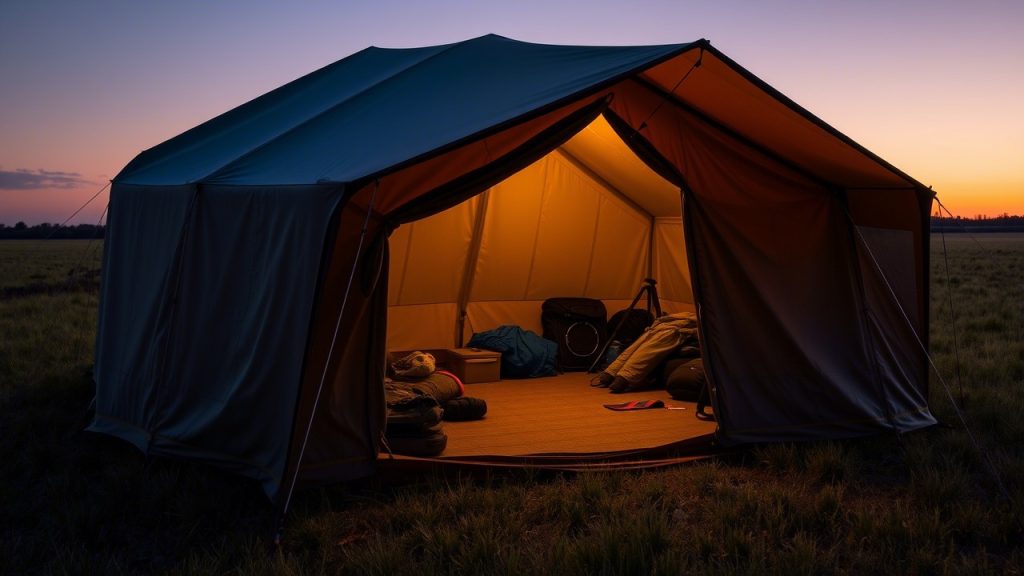Stargazing is one of the most magical experiences you can have while camping. Lying under a blanket of stars, far from city lights, feels like a private show put on by the universe. But to truly enjoy this experience, you need a tent that balances comfort, visibility, and protection from the elements. Whether you’re a casual camper or a dedicated astronomer, these 14 tent ideas will help you create the perfect setup for stargazing in comfort.
From choosing the right tent to optimizing your campsite, these practical tips ensure you can soak in the night sky without sacrificing sleep or safety. Plus, we’ve included a detailed FAQ section to answer common questions about stargazing tents and setups. Let’s get started!
Why Stargazing Tents Matter
A great stargazing tent does more than keep you dry—it enhances your connection to the night sky. The best tents for stargazing offer unobstructed views through mesh panels or removable rainflies while maintaining ventilation, durability, and comfort. They also protect you from bugs, dew, and chilly nights, so you can focus on the stars rather than swatting mosquitoes or shivering.
The ideas below are designed to work with most tent types and camping styles, from car camping to backpacking. By implementing these tips, you’ll transform your tent into a cozy observatory that makes stargazing unforgettable.
14 Best Tent Ideas to Enjoy Stargazing in Comfort
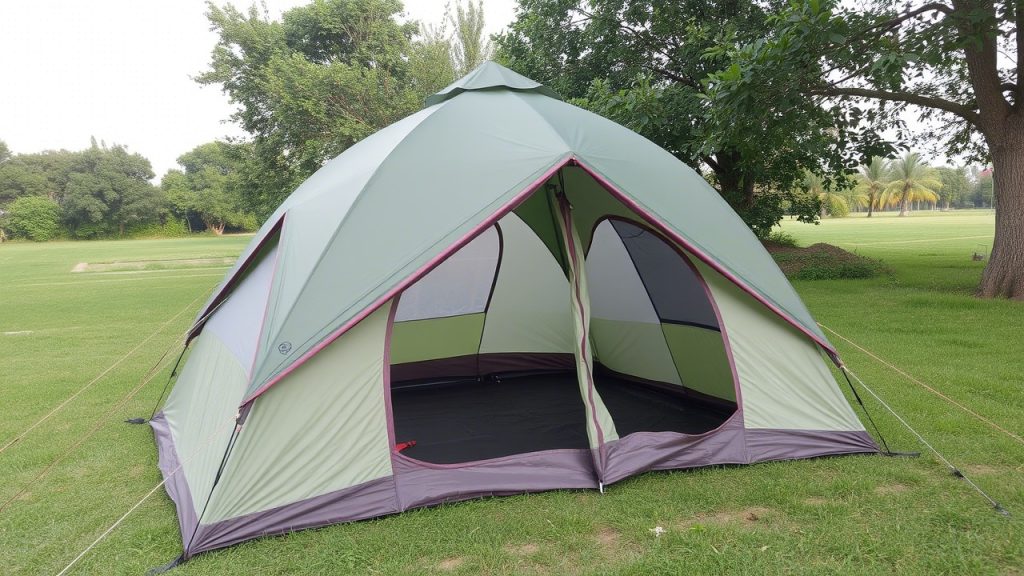
1. Choose a Tent with Large Mesh Panels
Mesh-heavy tents provide excellent visibility for stargazing while keeping bugs out. Look for models with expansive mesh roofs or walls that allow you to see the sky from multiple angles.
How to Do It:
- Research tents like the Big Agnes Copper Spur HV UL3 or REI Co-op Half Dome SL 2+, which feature large mesh panels.
- Ensure the tent has a full-coverage rainfly you can roll back for clear views or deploy if weather changes.
- Test the tent in your backyard to confirm the mesh offers a wide field of view.
Why It Works:
Large mesh panels maximize your view of the night sky, creating an immersive stargazing experience without leaving the tent.
2. Opt for a Tent with a Removable Rainfly
A removable or roll-back rainfly lets you expose the mesh roof for stargazing while keeping the option to cover up during rain or wind.
How to Do It:
- Choose tents like the Mountain Hardwear Mineral King 3, which has a rainfly that can be partially or fully removed.
- Practice rolling back and securing the rainfly to ensure quick adjustments at night.
- Store the rainfly in an accessible pocket for fast deployment if weather shifts.
Why It Works:
A removable rainfly gives you flexibility to enjoy clear nights and stay protected during sudden weather changes.
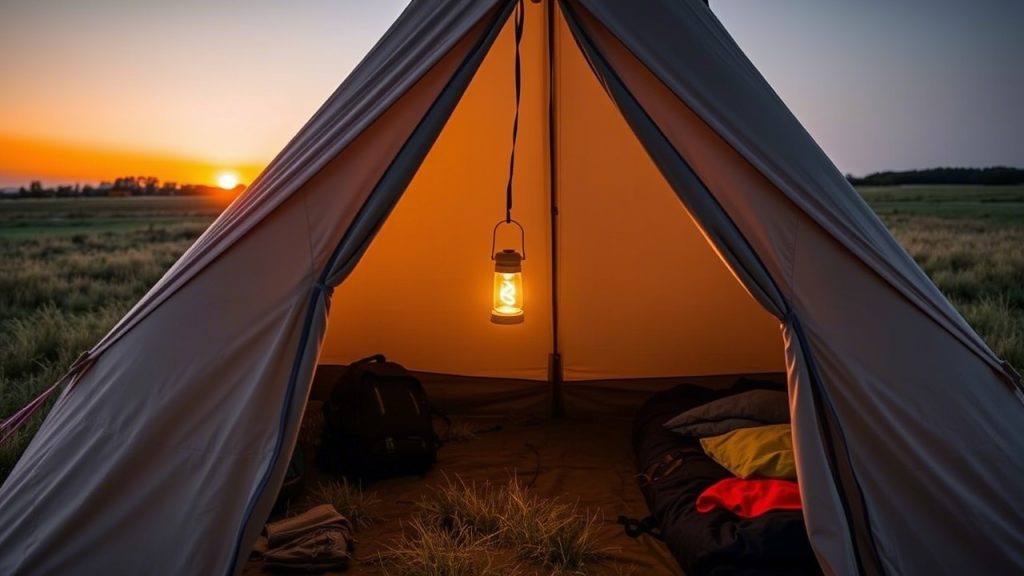
3. Select a Lightweight Tent for Backcountry Stargazing
For remote stargazing spots with minimal light pollution, a lightweight tent is essential for backpacking to pristine locations.
How to Do It:
- Invest in an ultralight tent like the Nemo Hornet Elite Osmo 2P (2 lbs. 2 oz.) or MSR FreeLite 2 (2 lbs. 5 oz.).
- Prioritize tents with mesh-heavy designs for stargazing and compact packed sizes for easy carrying.
- Pair with a lightweight sleeping pad and bag to keep your pack weight down.
Why It Works:
A lightweight tent makes it easier to hike to remote areas, where the darkest skies offer the best stargazing.
4. Use a Transparent Tarp for Extra Visibility
A transparent or semi-transparent tarp can create a stargazing-friendly shelter without a traditional tent, ideal for warm, dry nights.
How to Do It:
- Purchase a clear polycryo tarp or a lightweight silnylon tarp with some transparency.
- Set up the tarp as an A-frame or lean-to using trekking poles or guylines, ensuring an unobstructed view of the sky.
- Place a groundsheet or footprint underneath to stay dry and comfortable.
Why It Works:
A transparent tarp offers a near-panoramic view of the stars while providing minimal protection from dew and light wind.
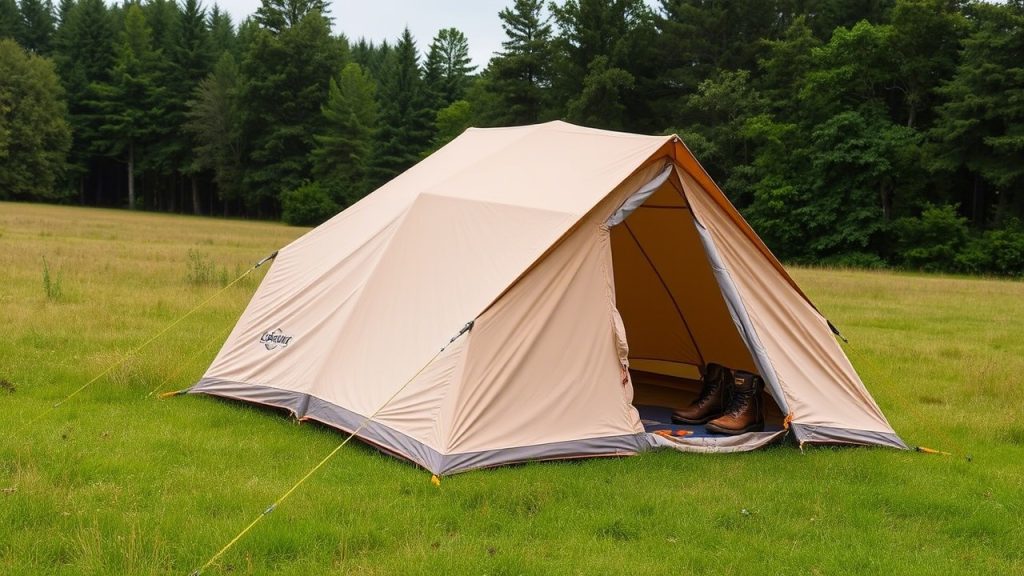
5. Add a Skylight with a DIY Mesh Window
If your tent lacks sufficient mesh, you can create a custom skylight by modifying the rainfly or adding a mesh panel.
How to Do It:
- Cut a section of the rainfly above the tent’s mesh roof and sew in a clear vinyl or mesh panel (use a sewing awl for durability).
- Ensure the modification doesn’t compromise the rainfly’s waterproofing by sealing seams with seam sealer.
- Test the skylight in light rain to confirm it remains weatherproof.
Why It Works:
A DIY skylight enhances visibility for older tents, letting you stargaze without buying a new model.
6. Position Your Tent for Optimal Sky Views
Campsite selection and tent orientation are critical for unobstructed stargazing. Place your tent to maximize your view of the sky.
How to Do It:
- Choose a campsite with minimal tree cover, ideally in an open meadow or high clearing.
- Orient the tent’s mesh roof or door toward the part of the sky you want to observe (e.g., north for the Milky Way).
- Avoid setting up near bright light sources like campfires or other campers’ lanterns.
Why It Works:
Proper positioning ensures you see more stars without craning your neck or leaving the tent.
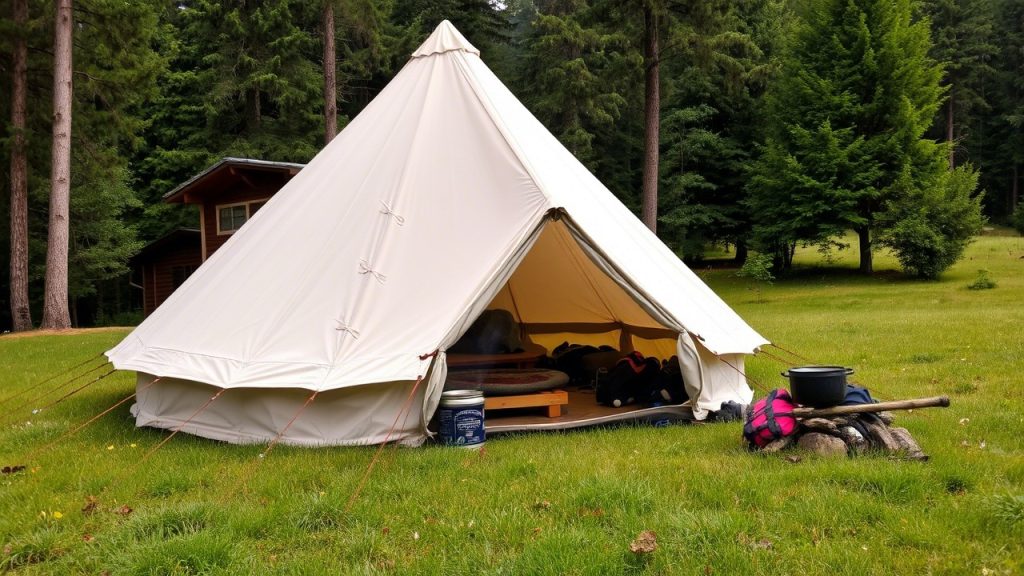
7. Use a Comfortable Sleeping Pad and Blanket
Comfort is key for long stargazing sessions. A supportive sleeping pad and cozy blanket let you relax while gazing upward.
How to Do It:
- Choose an inflatable sleeping pad like the Therm-a-Rest NeoAir XLite (12 oz.) for lightweight comfort.
- Bring a lightweight, packable blanket or quilt instead of a sleeping bag for easier movement while stargazing.
- Position your pad to align with the tent’s mesh panels for the best view.
Why It Works:
A comfortable setup keeps you relaxed and warm, so you can stargaze for hours without discomfort.
8. Invest in a Tent with a Gear Loft
A gear loft keeps your belongings organized and off the floor, freeing up space to lie back and enjoy the stars.
How to Do It:
- Select a tent with a built-in gear loft, like the MSR Habitude 6, or add an aftermarket loft (e.g., Kelty Gear Loft).
- Store small items like headlamps, phones, or star charts in the loft to keep them accessible.
- Ensure the loft doesn’t block your view of the mesh roof.
Why It Works:
A gear loft maximizes interior space, making your tent feel more open for stargazing.
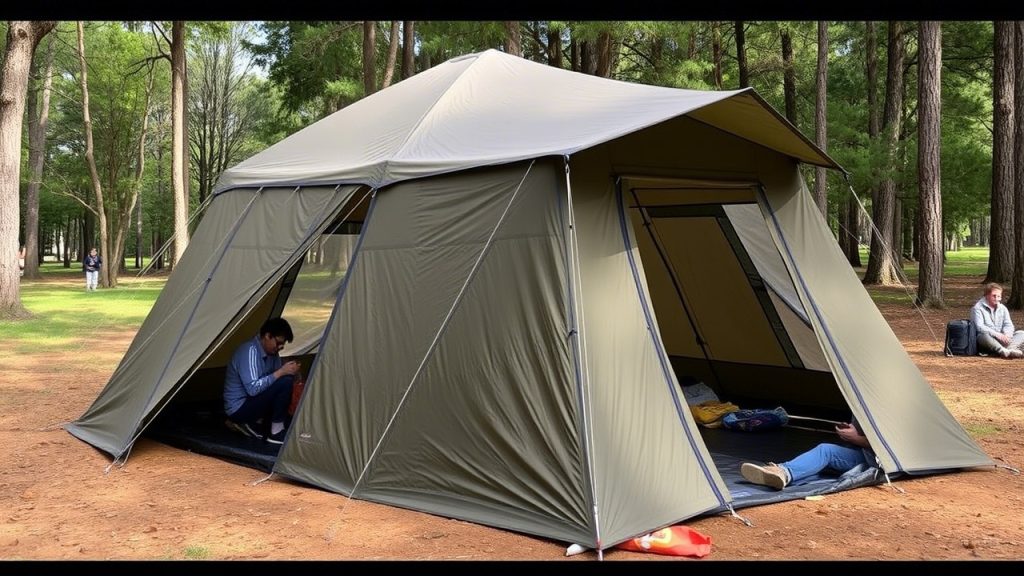
9. Add a Stargazing Chair or Hammock
For campers who prefer sitting while stargazing, a lightweight chair or hammock outside the tent offers a comfortable alternative.
How to Do It:
- Bring a portable chair like the Helinox Chair Zero (1 lb.) or a packable hammock like the ENO SingleNest (16 oz.).
- Set up the chair or hammock near your tent, facing the best part of the sky.
- Use a blanket or sleeping bag to stay warm while seated.
Why It Works:
A chair or hammock provides a relaxed vantage point for stargazing outside the tent, ideal for warm nights.
10. Use a Red-Light Headlamp
Bright white light ruins your night vision, making it harder to see stars. A red-light headlamp preserves your ability to stargaze.
How to Do It:
- Purchase a headlamp with a red-light mode, like the Black Diamond Astro 300-R.
- Use the red light for tasks like setting up or navigating your campsite at night.
- Keep the headlamp dim to minimize light pollution.
Why It Works:
Red light maintains your eyes’ sensitivity to low light, enhancing your stargazing experience.
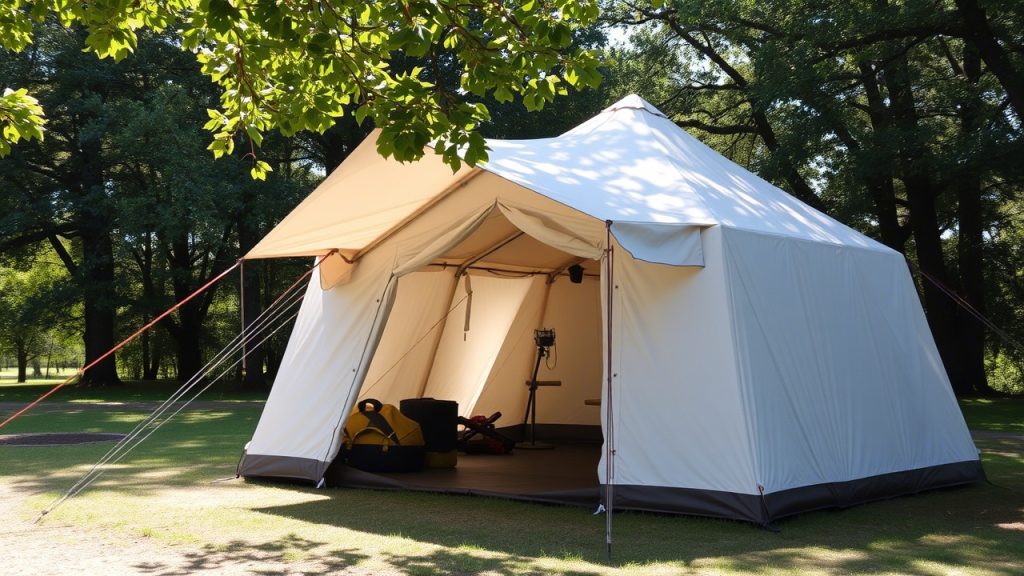
11. Bring a Star Chart or App
A star chart or astronomy app helps you identify constellations, planets, and other celestial objects, enriching your stargazing.
How to Do It:
- Download a stargazing app like SkySafari or Stellarium, or carry a physical star chart.
- Use the app in night mode (red light) to preserve night vision.
- Practice identifying major constellations like Ursa Major or Orion before your trip.
Why It Works:
A star chart makes stargazing more interactive and educational, keeping you engaged for longer.
12. Protect Against Dew with a Tarp or Bivy
Dew can soak your sleeping bag or gear during clear, starry nights. A tarp or bivy adds protection while keeping the sky visible.
How to Do It:
- Use a lightweight bivy sack like the Outdoor Research Helium Bivy for solo campers.
- Alternatively, set up a small tarp above your tent’s mesh roof, leaving gaps for visibility.
- Shake off dew in the morning and dry gear before packing.
Why It Works:
Dew protection keeps you dry and comfortable, ensuring uninterrupted stargazing.
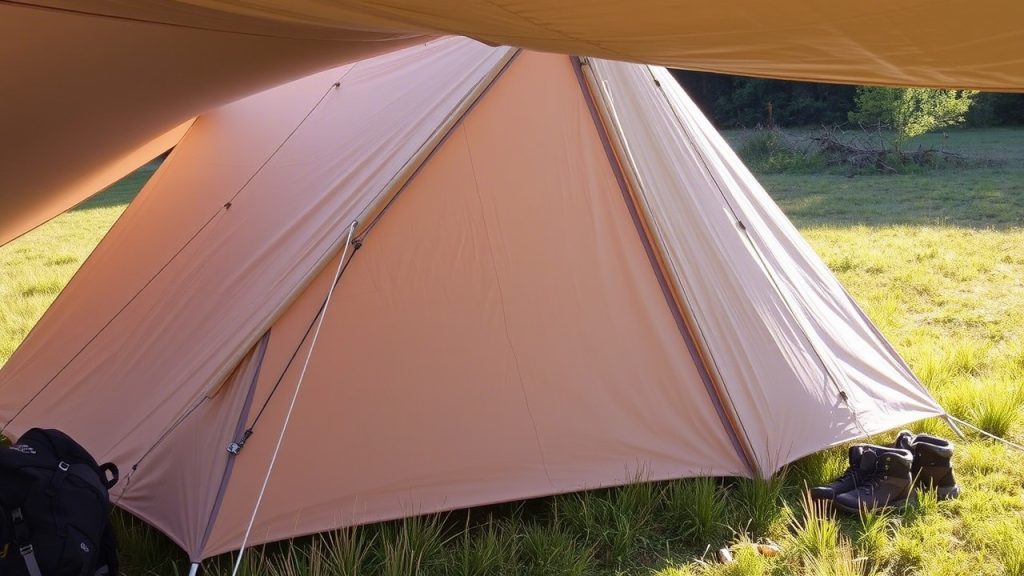
13. Enhance Comfort with a Double-Wall Tent
Double-wall tents with a separate inner mesh layer and rainfly offer better ventilation and condensation control, ideal for stargazing in humid conditions.
How to Do It:
- Choose a double-wall tent like the REI Co-op Trailmade 2 for balanced ventilation and weather protection.
- Keep the rainfly off or rolled back on clear nights to expose the mesh inner tent.
- Ensure proper guying to maintain stability without the rainfly.
Why It Works:
Double-wall tents reduce condensation, keeping your stargazing experience dry and comfortable.
14. Plan Your Trip for Optimal Stargazing Conditions
Timing and location are crucial for great stargazing. Plan your trip to coincide with clear skies and minimal light pollution.
How to Do It:
- Check weather forecasts for clear, cloudless nights and avoid full moon periods, which reduce star visibility.
- Use light pollution maps (e.g., DarkSiteFinder) to find dark-sky locations like national parks or remote forests.
- Aim for summer or early fall for comfortable temperatures and longer nights.
Why It Works:
Optimal conditions maximize star visibility, making your stargazing trip more rewarding.
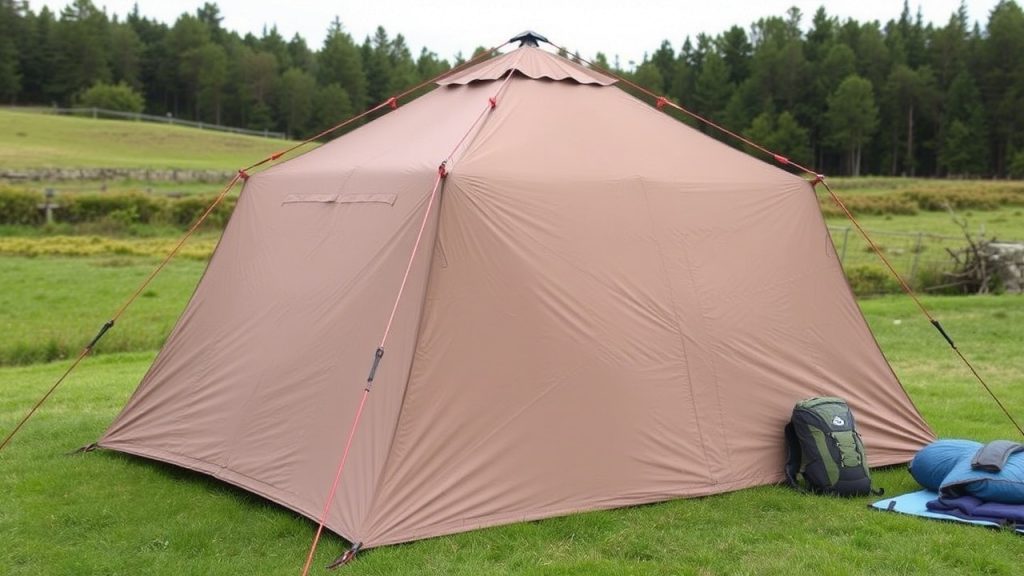
Bonus Tips for Stargazing Comfort
- Bring Binoculars: A pair of compact binoculars (e.g., Celestron SkyMaster 8×42) enhances your view of star clusters and galaxies.
- Layer Clothing: Wear moisture-wicking base layers and a warm jacket to stay comfortable in cool night air.
- Use a Footprint: A groundsheet protects your tent floor from damp ground, keeping you dry.
- Pack Snacks: Keep lightweight snacks like trail mix handy for late-night stargazing sessions.
9 Frequently Asked Questions About Stargazing Tents
1. What makes a tent good for stargazing?
A good stargazing tent has large mesh panels or a removable rainfly for clear sky views, ample ventilation to prevent condensation, and durable materials to withstand outdoor conditions.
2. Can I stargaze in a tent without mesh?
Yes, but it’s less ideal. You can modify the tent with a DIY mesh window or use a transparent tarp for better visibility. Alternatively, stargaze outside the tent with a chair or hammock.
3. How do I prevent bugs while stargazing in a mesh-heavy tent?
Ensure the tent’s mesh is fine enough to block small insects (no-see-um mesh is best). Check for gaps in zippers or seams and use a bug-repellent spray around the tent perimeter.
4. Are ultralight tents durable enough for stargazing?
Yes, ultralight tents like the Big Agnes Copper Spur HV UL3 use high-quality materials like ripstop nylon and DAC poles, making them durable for stargazing in mild to moderate conditions.
5. How do I stay warm while stargazing in a tent?
Use a warm sleeping pad (R-value 3 or higher), a lightweight quilt or blanket, and layer clothing. Keep the rainfly handy to block wind if temperatures drop.
6. Can I stargaze in a rooftop tent?
Yes, rooftop tents like the Thule Approach M can work for stargazing if they have mesh windows or a removable roof panel. Position the vehicle for an unobstructed sky view.
7. How do I find the best stargazing locations?
Use light pollution maps like DarkSiteFinder to locate dark-sky areas. National parks, remote forests, or high-altitude clearings are ideal. Check local regulations for camping permissions.
8. What’s the best time of year for stargazing?
Summer and early fall offer warm nights and clear skies, ideal for stargazing. Avoid full moon phases, as moonlight can wash out fainter stars.
9. Do I need special equipment for stargazing?
A star chart or app is enough for casual stargazing. Binoculars or a beginner telescope can enhance your experience but aren’t necessary for enjoying constellations and planets.
Conclusion
Stargazing from a tent is a magical way to connect with the cosmos, and with these 14 ideas, you can do it in comfort and style. From choosing a mesh-heavy tent to planning your trip for optimal conditions, each tip helps you create a cozy, sky-friendly setup that enhances your outdoor experience.
Whether you’re backpacking to a remote ridge or car camping with friends, these strategies ensure you can gaze at the stars without worrying about bugs, dew, or discomfort. Pack your tent, grab a star chart, and get ready for a night under the stars you’ll never forget!
Happy stargazing!

